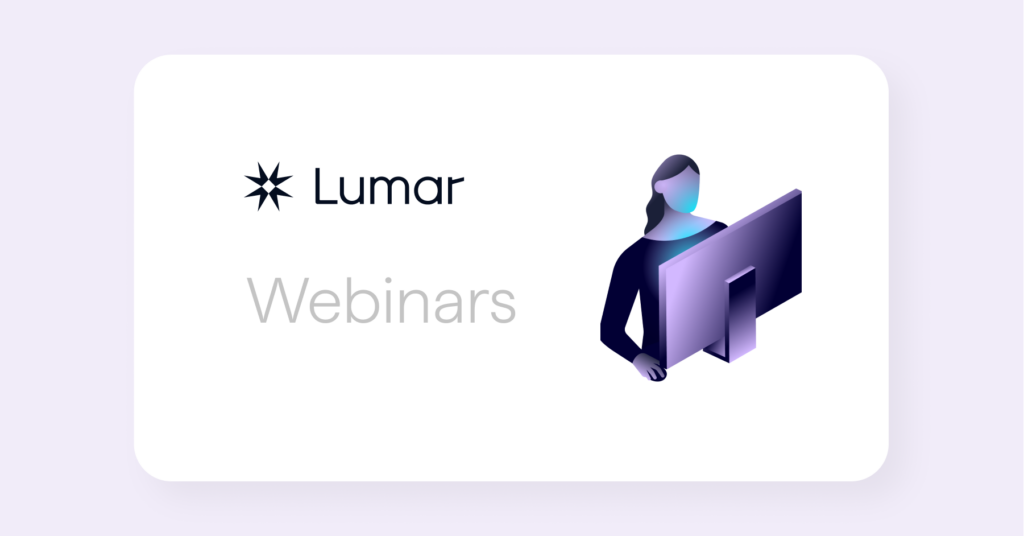For our last DeepCrawl (now Lumar) webinar, we were joined by Max Prin, Head of Technical SEO at Merkle, who sat down with Ashley Berman-Hale to talk about making the bot experience as good as the user experience by utilising PWA and AMP. During the webinar with Max, so many brilliant questions were submitted by our audience that there wasn’t time to answer all of them live.
Luckily, Max went away and wrote up his thoughts on the remaining questions, which we’ve included in this post. Read on to find out what he has to say.
What is the effect of adding AMP if my audience uses an iPhone?
AMP is a browser-agnostic framework. It’s HTML5 and functions the same on all modern browsers. As per the AMP viewer, it’s hosted on Google.com (and other supporting platforms) so iPhone and Android users get the same experience.
If there is just one speed KPI that you should focus on when you have a URL that contains video, what would you focus on?
As there are so many metrics that can be used, just using one is not the best thing to do. Ashley also recommended using Time To Interactive (TTI) to be able to know then users can engage with the media
Are there ways to co-relate conversion rate with page speed for those who aren’t using Google Analytics?
The custom report you can create in Google Analytics is a high-level view of this (potential) correlation. It is as accurate as the speed data there is.
Such a correlation report can also be created outside of GA, all you need is your conversion rate over time and some data from site speed monitoring (from the Chrome User Experience Report if available, and/or a custom monitoring system with Lighthouse (PageSpeed Insights API) or WebPageTest.org API.
What are the best examples of PWAMPs live in production (i.e. what brands have adopted this approach)?
The exact approach I presented, AMP + PWA on the same URLs, has not been implemented as far as I know (it’s a proof of concept as this point).
Some brands like 1-800-Flowers or the Washington Post have implemented both PWA (their mobile site) and AMP versions of pages.
Are semantics important for google html5?
Yes, it is “important”. How important can be debated but in general, HTML5 semantic markup helps with accessibility. Search engines can also use that structure to better understand the content and relevance of the page.
Does the AMP to PWA workflow create issues for tracking? We’ve had some issues where session tracking breaks between AMP, PWA, and Responsive.
It can indeed create issues. Especially from the AMP side where it was recommended to have a separate property in Google Analytics for example. However, I think those issues could be avoided altogether if only 1 set of URLs is used (PWA and AMP on the same URLs as presented in the webinar).
Leveraging Signed Exchanges (Cloudflare’s AMP Real URLs) could also help as Google’s AMP viewer would show the site URL itself and Google’s AMP cache.
If my website is slow and not ranking well due to speed, will AMP help my SERP positioning
If the site really is impacted by the “Speed Update”, meaning it is consistently slow enough to be flagged as such, then yes, AMP should help there.
What about PWA and SEO?
Someone (an engineer at Google I believe) said “a PWA is just a website well made”. SEO work and performance is not different. Some focus on rendering and accessibility of content for search bots might be needed though, as it’s likely a PWA is JavaScript-heavy.
How do you feel about AMP being viewed as duplicate content?
The implementation guidelines of AMP (alternate + canonical tags) is pretty straightforward and I don’t believe Google has any issues understanding the relationship. However, on paper, adding more URLs for the same content is always a risk or, at least, something to manage from a signaling standpoint. Using PWA and AMP on the same URLs also helps in this case.
What talking points do you suggest to overcome developer anxiety about a Google conspiracy (theory) with AMP?
I would focus on the actual benefits of AMP for the business. Are users bouncing from landing pages (coming from the SERPs)? The instant delivery from the SERP is, in my opinion, the most important advantage of AMP, the only thing that can’t be replicated outside of the framework.
We’d like to say another big thank you to Max for taking the time to answer all of these questions and providing his expert insights on this topic.
Get started with DeepCrawl
If you’re interested in learning about how DeepCrawl can help you gain an understanding into how search engines are viewing your mobile website, as well as discover key page speed insights, then why not sign up for a DeepCrawl account to get started.



